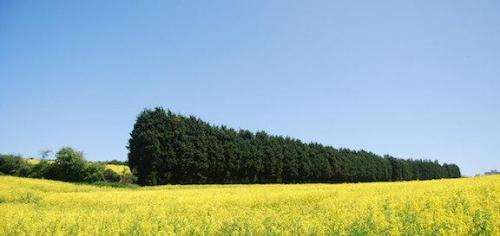Farms with windbreaks with significant areas of ground cover vegetation have been shown to attract wasps that are beneficial to agricultural pest control, according to a new study from the University of Melbourne.
PhD candidate Ian Smith said while researchers have known that shelterbelts or windbreaks provide wind reduction, better quality soil and reduce erosion, it now appears that surrounding ground cover can reduce the numbers of pest insects.
"As long as the leaf litter is low, we found a correlation between greater proportions of ground cover vegetation and an abundance of beneficial wasp species," Mr Smith said. "Increased grass height also helped."
Wasps that are beneficial to agriculture are in a different family to the much larger commonly known European wasp, and don't sting. They control other pest species by laying eggs within the pest's nest or among its larvae, ultimately killing the pest.
"We found flowers in shelterbelts had higher amounts of the wasp Trichogramma which can eliminate the eggs of Light Brown Apple Moth, which is a major pest in Australian vineyards," Mr Smith said.
Mr Smith investigated beneficial wasp abundance in 60 sites of linear strips of trees in a diverse range of farm landscapes throughout the Yarra Valley in Victoria. "Beneficial wasps were more abundant in creek and river vegetation. This indicates that riverbank stabilisation works already undertaken by many farmers bring additional benefits in the form of biological control."
The study suggests shelterbelts with significant ground cover reduced numbers of pests, which then led to reduced use of pesticides, providing economic benefit to landholders.
More information: Smith, I. M., Hoffmann, A. A. and Thomson, L. J. (2014), "Ground cover and floral resources in shelterbelts increase the abundance of beneficial hymenopteran families." Agricultural and Forest Entomology. doi: 10.1111/afe.12086
Provided by University of Melbourne





















